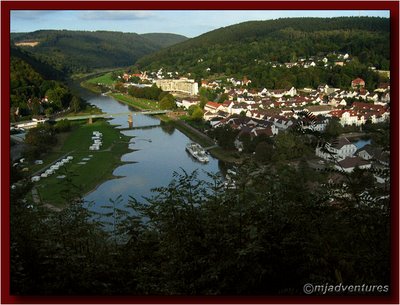While Berlin basks in glorious unseasonal sunny and warm weather, the animals are preparing for winter.
Birds are flying south, and the cranes and geese travelling from the north to South Africa use Germany as a resting point during their journey.
Closer to home, our resident squirrel, Ginger, is busy gathering supplies and storing them wherever possible.
Today she got braver, and J looked up to see her peering into the house through the closed door. Upon the door being opened, and enticed by a heady mix of walnuts and hazelnuts, Ginger ventured into the house to collect her shopping, before scampering back out the door to bury them in the garden!
Click on this image to play the video

She's a fussy squirrel - peanuts are a no-no, broken walnuts are to be eaten immediately, all intact walnuts and hazelnuts instantly become buried treasure.
Ginger grabs walnuts and hazelnuts while the Blue Jay gets the peanuts!
 If she becomes any more familiar, she'll be arriving with a packed suitcase and asking to stay indoors for the winter.
If she becomes any more familiar, she'll be arriving with a packed suitcase and asking to stay indoors for the winter.
 We're going to be broke because it's costing us more to buy nuts for the squirrel and birds than it is to buy food for ourselves!
We're going to be broke because it's costing us more to buy nuts for the squirrel and birds than it is to buy food for ourselves!
 UPDATE: Now we have 2 regular squirrels dropping in, as well as the Bluejay. Our new arrival has been named Van Hazel! The only way we can tell them apart is that on Ginger's left hind leg, she has half a toe missing.
UPDATE: Now we have 2 regular squirrels dropping in, as well as the Bluejay. Our new arrival has been named Van Hazel! The only way we can tell them apart is that on Ginger's left hind leg, she has half a toe missing.
 Van Hazel tucking into a walnut
Van Hazel tucking into a walnut




















































